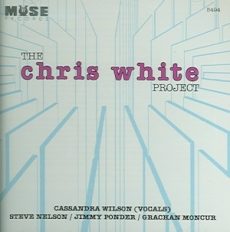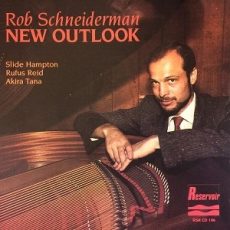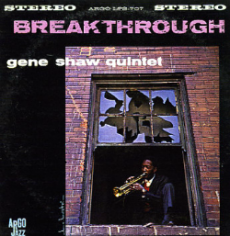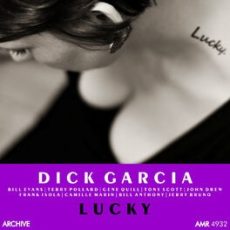
Daily Dose Of Jazz…
Chris White was born Christopher Wesley White on July 6, 1936 in Harlem, New York and grew up in Brooklyn, New York. In 1956 he graduated from City College of New York, and in 1968 from the Manhattan School of Music. Continuing his education six years later he earned his Master of Education from the University of Massachusetts Amherst. In 1994, he did postgraduate Advanced Computer Study at Berklee College of Music.
An occasional member of Cecil Taylor’s band in the 1950s, he was credited on the 1959 Love for Sale album. From 1960 to 1961 he accompanied Nina Simone and subsequently he was a member of Dizzy Gillespie’s ensemble until 1966.
He founded the band The Jazz Survivors and was a member of the band Prism. Throughout his career he collaborated with Billy Taylor, Eubie Blake, Earl Hines, Chick Corea, Teddy Wilson, Kenny Barron, Mary Lou Williams, Duke Ellington, Sarah Vaughan, Carmen McRae and Billy Cobham.
Bassist, arranger, producer and educator Chris White, who was on the creative arts and technology faculty at Bloomfield College in New Jersey, died on November 2, 2014.
More Posts: arranger,bandleader,bass,educator,history,jazz,music,producer

Daily Dose Of Jazz…
Robert Roland “Rob” Schneiderman was born in Boston, Massachusetts on June 21, 1957. He began professional jazz career in San Diego, California around the age of 16, when he played piano for visiting soloists such as Eddie Harris, Sonny Stitt, Harold Land, Charles McPherson and Peter Sprague. He continued to collaborate intermittently with Harris, until the latter’s death in 1996, and with McPherson.
In 1982, Rob moved to New York City, where he performed and toured with J.J. Johnson, Chet Baker, Art Farmer, Clifford Jordan, James Moody and Zoot Sims. A performance fellowship from the National Endowment for the Arts in 1987 featured him with George Coleman, Jimmy Heath, Claudio Roditi, and Slide Hampton. The collaboration with Slide Hampton resulted in his debut album New Outlook, the first of ten recordings to date as a leader for the Reservoir label.
Schneiderman has played as sidemen for Billy Higgins, Rufus Reid, Brian Lynch, Ralph Moore, Peter Washington, Lewis Nash, Akira Tana, Billy Hart, Gary Smulyan and Ben Riley.
As a jazz educator, he has been in residence at the Stanford Jazz Workshop. He was an adjunct professor in the jazz departments of William Paterson University with Rufus Reid and Queens College with Jimmy Heath. He has also been on the faculty of the Jazzschool in Berkeley, California.
Pianist Rob Schneiderman, who also works as a professor and chair of mathematics at Lehman College of the City University of New York, continues to perform and record.
More Posts: bandleader,history,instrumental,jazz,music

Daily Dose Of Jazz…
Gene Shaw was born Clarence Eugene Shaw in Detroit, Michigan on June 16, 1926. He played the piano and trombone as a child and didn’t begin playing the trumpet sometime around 1946 after hearing Dizzy Gillespie’s Hot House while recovering from injuries sustained in the army.
He attended the Detroit Institute of Music, and studied with pianist Barry Harris. In his hometown he played with Lester Young, Wardell Gray, and Lucky Thompson. His move to New York City in 1956 had him playing with Charles Mingus’s Jazz Workshop a year later and among his credits with the bassist are Tijuana Moods, East Coasting, where he used a Harmon mute, although he was initially wary of using it, given its association with the sound of Miles Davis.
Later that same year over a fight with Mingus, he destroyed his instrument and quit music. Not returning to playing until 1962, Gene formed his own ensemble. He retired again two years later, then returned to music once more in 1968.
As a leader he recorded three albums between 1962 and 1964 on the Argo label titled Breakthrough, Debut in Blues and Carnival Sketches. As a sideman with Mingus he also recorded three albums, East Coasting and A Modern Jazz Symposium of Music and Poetry on the Bethlehem label in 1957, and Tijuana Moods in 1962 on RCA.
Trumpeter Gene Shaw, who was an active member of the Chicago Gurdjieff society and a student of Fourth Way psychology, including its music, died in Los Angeles on August 17, 1973.
More Posts: bandleader,history,instrumental,jazz,music,trumpet

Daily Dose Of Jazz…
Dick Garcia was born Richard Joseph Garcia on May 31, 1931 in New York City. He began to play the guitar aged nine.
In 1950, he was a member of Tony Scott’s quartet. From 1952, he worked with George Shearing, Charlie Parker, Joe Roland, Milt Buckner, Johnny Glasel, Lenny Hambro, Aaron Sachs, and Bobby Scott.
He recorded again with Shearing in the late 1950s and early 1960s, then with Kai Winding, Milt Buckner, Nat King Cole, Johnny Glasel, Lenny Hambro, Joe Roland, Bobby Scott, Tony Scott, and Nancy Wilson.
Guitarist Dick Garcia, who recorded as a leader and sideman, still plays occasionally at age 93.

Daily Dose Of Jazz…
Jan Leder was born May 19, 1958 and raised in New York City and pursued her love for improvisation after twelve years of studying classical music. She studied for three years with pianist Lennie Tristano and then continued her jazz studies with pianist Connie Crothers for over ten years. A self-styled course of study in jazz history at SUNY Purchase led to her compilation of the first comprehensive history of women in jazz titled Women in Jazz: A Discography of Instrumentalists 1913-1968.
In February 1997 Monad Records released her first recording, Passage To Freedom, which was recorded live at the Five Spot in New York City. In 1999 Jan recorded Nonchalant, a collection of mostly original melodies.
Ms. Leder leads her own jazz ensembles in the New York City area, appearing at nightclubs, festivals, cultural functions and other public and private engagements. Her repertoire includes standard bebop, swing, blues and bossa novas as well as her own unique jazz compositions and those of her musical colleagues, including drummer/big band leader Art Lillard, with whom Jan collaborated on numerous compositions, mostly writing lyrics to his catchy songs.
From 1987 to 2012 Jan was a member of the flute section in Art Lillard’s Heavenly Band. Jan was also a member of a group of jazz flutists called the NY Jazz Flutet that included Dotti Anita Taylor, Elise Wood, Michele Smith and Chip Shelton along with drummer Art Lillard.
She entertains at healthcare facilities, teaches workshops and seminars, plays at fundraisers and jazz festivals. She has toured around the world, and composed pop, r&b, theater and film music. Leder has worked with the 9th Street Stompers, a popular local jazz band, playing their unique variety of jazz styles in parades, street fairs and other venues.
Flutist Jan Leder, who is a writer and publisher member of the American Society of Composers, Authors and Publishers and a member of the National Association of Music Publishers, continues to perform, compose and teach jazz improvisation.
More Posts: bandleader,flute,history,instrumental,jazz,music




